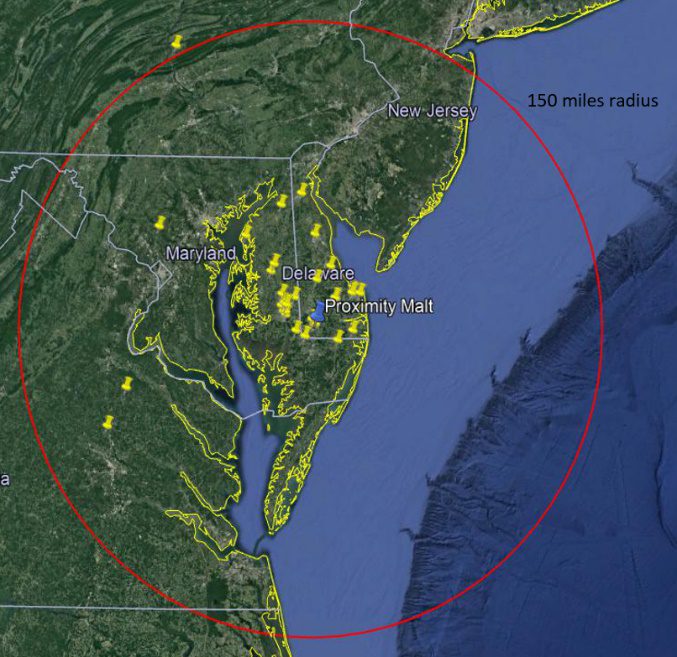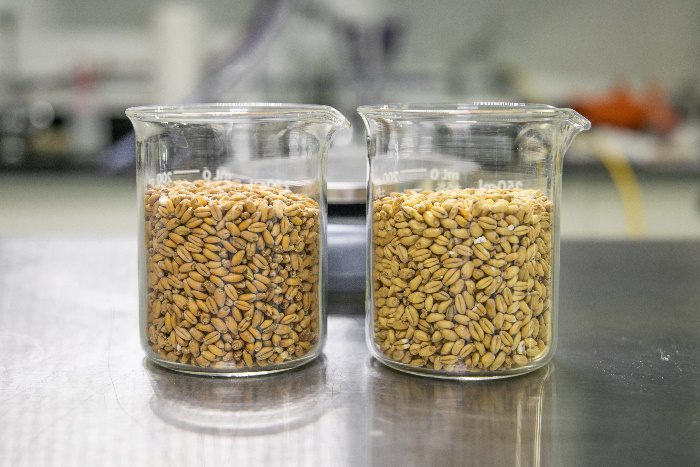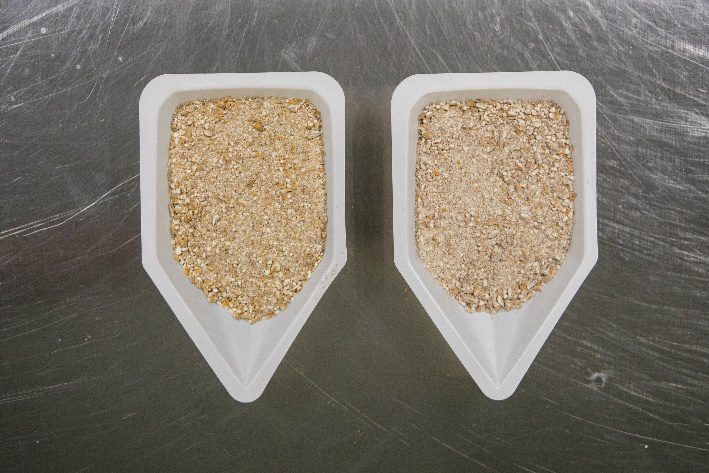Subscribe to Our Mailing List
Get the latest news and updates with our Proximity Malt newsletters.
Chances are, you’ve never heard of Mid-Atlantic wheat malt – made with soft winter wheat grown in the Delmarva Peninsula, local to our Laurel, DE malthouse. (Trivia question: What does Delmarva stand for? Delaware, Maryland and Virginia!) Check out the map below, with the yellow dots marking our growers’ locations:

So, why winter wheat? Sourcing grain hyper-locally drives miles out of our supply chain, and reduces our GHG emissions and carbon footprint.
Winter grain crops – both barley and wheat–are great for our carbon footprint as well. Winter wheat is planted in the fall, after the corn and soybeans are harvested. Like all plants, winter wheat absorbs CO2 from the air and releases oxygen throughout its growing season from about October to mid-June. In addition to acting as a carbon sink, these cover crops (crops that are planted for the protection and enrichment of the soil) reduce soil erosion, slow the leaching of agrichemicals into the surrounding watersheds, and are central to the regenerative agriculture movement. You can learn more about regenerative agriculture at https://regenerationinternational.org/why-regenerative-agriculture/. In addition to the benefits to the environment, our farmers really appreciate growing winter barley and wheat as it allows them to plant a short cycle soybean after winter crop harvest, and reap the financial benefits of two crops in one annual cycle.
Bottom line – Winter crops, along with no-till agricultural practices, encourage biodiversity, improve farm land ecology and contribute to reversing climate change.
Buy Mid-Atlantic wheat and save the world, right?
And not only that! Because the wheat is a winter variety, we tend to see lower proteins, which, of course, provides potential for more extract in the finished malt. Please see our Typical Analyses for both white wheat malt from our Monte Vista, CO plant, alongside the Mid-Atlantic wheat malt produced in Delaware:

Note that the wort color is actually lower in the Mid-Atlantic wheat malt when compared to the white wheat malt, moistures are about the same (which would indicate a similar kilning cycle), extracts average about two points higher (makes sense, given the lower protein levels) and has a moderate enzyme package.



Although you can see a difference in the raw wheat, when we mill the wheat for an ASBC Congress Mash, the grist is similar in color. Remarkably, the finished color in the Mid-Atlantic wheat Congress Mash is visibly lower than the white wheat malt. We did a hot steep between our Mid-Atlantic wheat and the white wheat; both tasted sweet and well-rounded, with a slightly drier finish noted in the Mid-Atlantic wheat. Based upon our evaluations of sensory and malt analysis, and some brewing trials run by friends, we expect that use of either Mid-Atlantic Wheat or Wheat Malt in any grist bill will yield nearly identical flavors and brewhouse performance.
How does Mid-Atlantic wheat brew? Just like you would expect from a malted white wheat, with higher potential extracts.
Finally, check out the price! Mid-Atlantic wheat is a screaming deal, thanks to our growers’ proximity to our plant. Pun intended!
Better beer… better world!